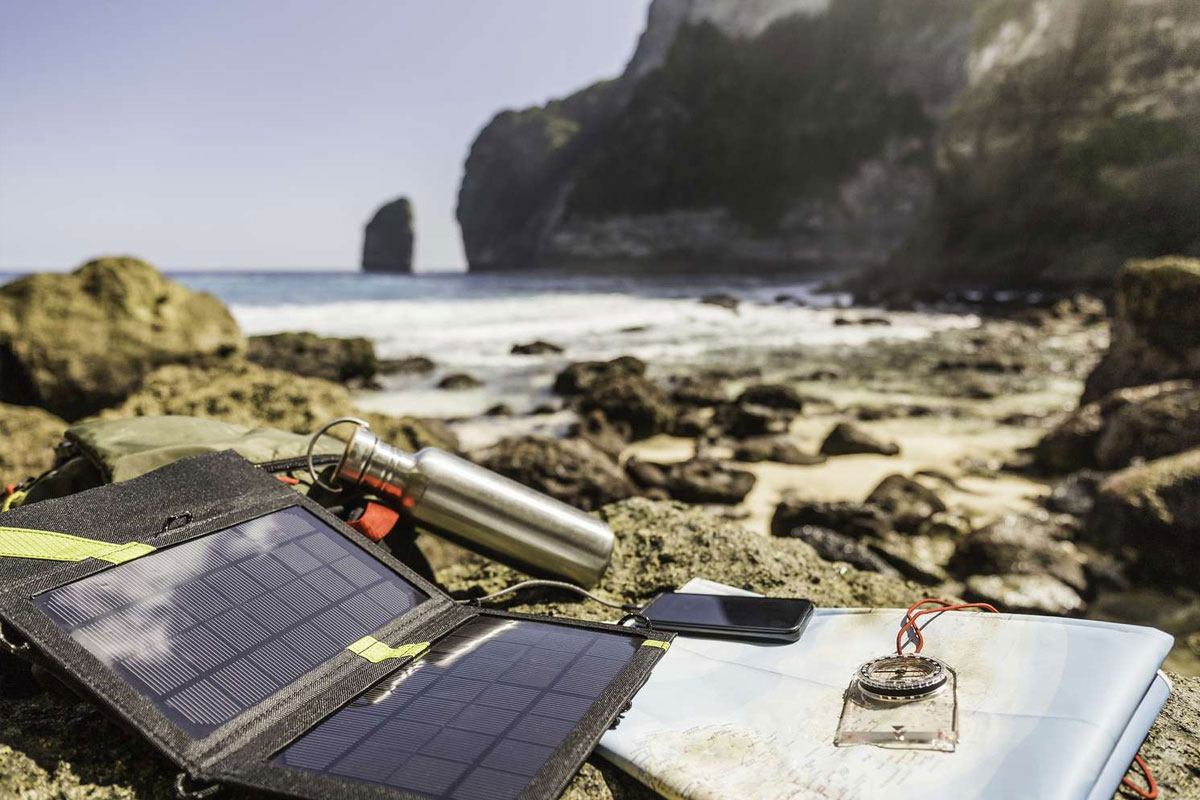Portable Solar Panels: The Ultimate Guide to Clean Power on the Go (2025 Edition)
As energy independence and sustainability gain importance, portable solar panels have become a go-to solution for travelers, off-grid enthusiasts, and even urban dwellers seeking backup power. This guide unpacks how these compact, foldable energy sources work, how to choose the right model, and where they can make the biggest impact.

Why Portable Solar Panels Matter More Than Ever
In an era of extreme weather events, rising energy costs, and growing mobile lifestyles (think #VanLife and digital nomads), portable solar panels offer a unique combination of freedom, resilience, and environmental responsibility. Unlike traditional generators, they're silent, emission-free, and low-maintenance — ideal for everything from backcountry adventures to emergency home use.
1. How Do Portable Solar Panels Work?
Portable solar panels function similarly to rooftop arrays but are built for mobility and ease of deployment. Here's a quick breakdown of their key components:
Solar Cells: Typically monocrystalline or polycrystalline, converting sunlight into DC electricity.
Charge Controllers: Regulate voltage to prevent battery overcharging.
Battery Packs (optional): Store electricity for later use.
Inverters: Convert DC to AC for common electronics.
Some plug-and-play models integrate all components, while others allow modular setups for more advanced users.
2. Top Use Cases for Portable Solar Panels
| Use Case | Description |
|---|---|
| Camping & Hiking | Power GPS devices, lights, or small appliances off-grid. |
| RV & Van Life | Charge laptops, fans, or even mini-fridges on the road. |
| Emergency Backup | Keep phones and radios charged during power outages. |
| Boating & Sailing | Generate power without relying on noisy fuel generators. |
| Urban Flexibility | Supplement balcony gardens or workstations with solar power. |
3. What to Look for When Buying in 2025
With dozens of brands and specs on the market, consider the following:
Wattage Output: 60–120W is good for small devices, 200W+ for heavier loads.
Portability: Look for foldable, lightweight models with carry handles.
Durability: Weather-resistant and impact-tested materials are essential.
Connector Types: USB, DC, and Anderson outputs are common; ensure compatibility.
Integrated Features: Some include built-in batteries, displays, or app controls.
Pro Tip: Prioritize monocrystalline panels for better efficiency in low-light conditions.
4. Best Portable Solar Panels of 2025 (by Category)
| Category | Top Pick | Key Features |
|---|---|---|
| Budget-Friendly | EcoFlow 110W Solar Panel | Lightweight, splash-proof, high efficiency |
| Best for Camping | Goal Zero Nomad 50 | Rugged, foldable, multiple output ports |
| High-Capacity Power | Bluetti PV200 | 200W output, compatible with large batteries |
| Best All-in-One Kit | Jackery Solar Generator 1000 | Includes battery & inverter, fast setup |
5. Practical Tips for Using Solar Panels on the Go
Angle Matters: Tilt panels toward the sun at 30–45° for best results.
Avoid Shade: Even partial shadow can drastically reduce efficiency.
Pair Smartly: Match solar input with battery capacity to avoid waste.
Track the Sun: Manual repositioning or motorized solar trackers improve performance.
6. Environmental Impact and Long-Term Value
While upfront costs can range from $100 to over $1,000, portable solar panels often pay for themselves in a few years through energy savings. More importantly, they reduce reliance on fossil fuels, lower your carbon footprint, and contribute to energy democratization.
7. The Future: Smart Panels and Solar Integration
Emerging trends include:
AI-driven solar optimization via app-integrated systems
Flexible panels for curved or irregular surfaces
Solar skins and transparent panels for multi-purpose use
Expect solar mobility to become more intuitive, efficient, and integrated into everyday products — from backpacks to electric vehicles.
Final Thoughts
Portable solar panels are no longer niche tech for survivalists or techies. In 2025, they're mainstream tools that support greener living, disaster preparedness, and a mobile lifestyle. Whether you're powering your next hike, your weekend cabin, or simply preparing for the unexpected, investing in portable solar is a smart move toward resilience and sustainability.
Related Articles
The Rise of Solar Power: Choosing the Best Company
This guide breaks down what to look for, profiles leading companies, and offers insights to help you make an informed decision.
Finding Trusted Solar Installers Near You: What Homeowners Need to Know
Find top-rated solar installers near you with this 2025 guide. Learn how to compare quotes, verify credentials, and avoid common mistakes.
Buy Solar in 2025: How to Make the Smartest Investment in Renewable Energy
Explore the latest tips, costs, and benefits of buying solar panels in 2025 to make a smart, sustainable investment.
2025's Most Efficient Solar Panels: What to Buy and Why It Matters
Discover the most efficient solar panels of 2025 with our expert guide on performance, cost, and key buying factors.
Solar Panels in 2025: What You Need to Know Before Making the Switch
Explore the benefits, costs, and latest innovations of solar panels in 2025—your guide to going solar smarter.
Top Solar Energy Solutions: Technologies, Trends, and What to Know Before You Invest
Explore the top solar energy solutions of 2025, including leading technologies, providers, and trends like solar-plus-storage and smart energy systems.
How to Choose the Best Local Solar Companies Near You in 2025
Looking for trusted local solar companies near you? Our expert guide helps you compare top-rated installers, understand pricing, and maximize incentives.